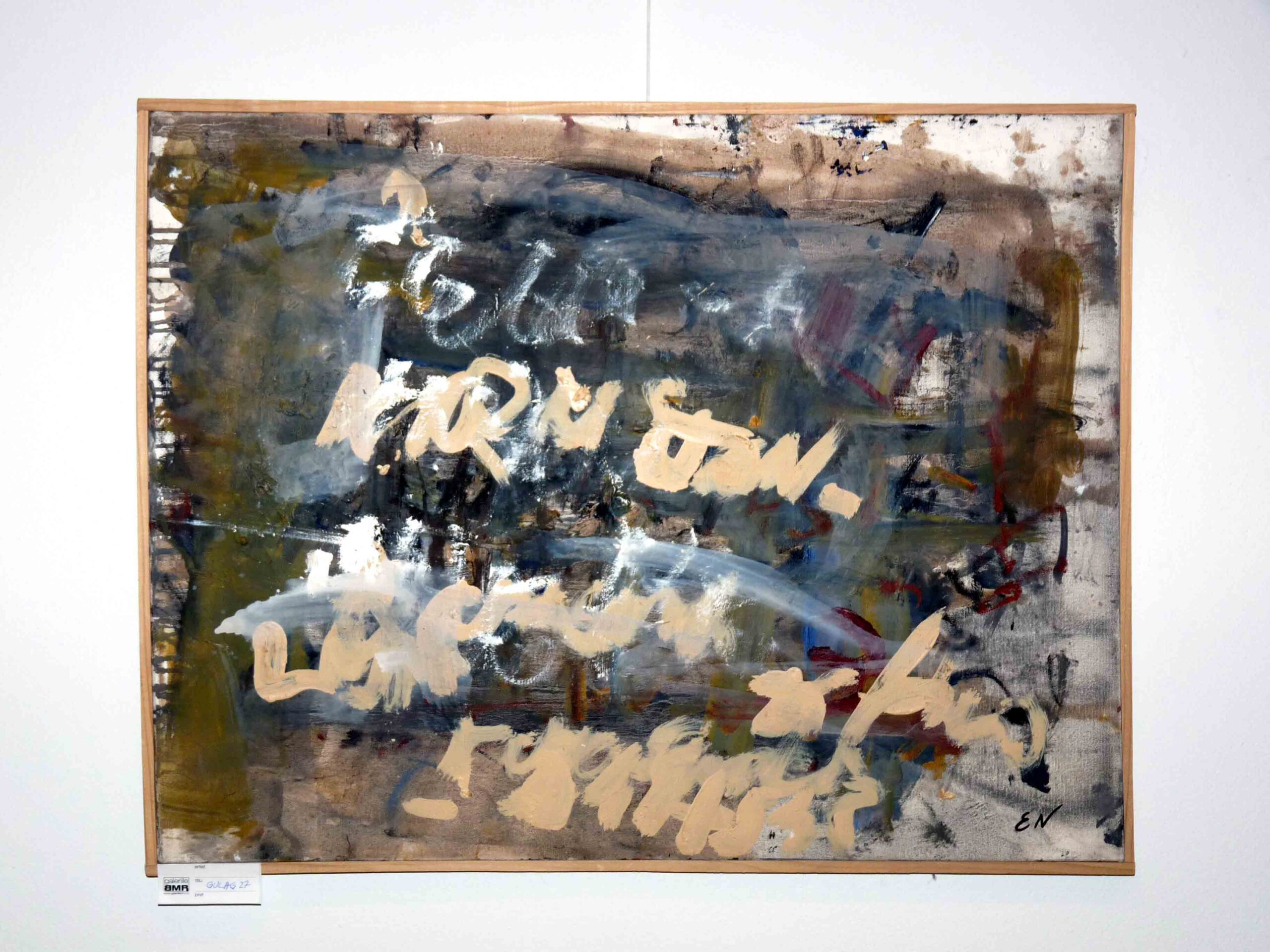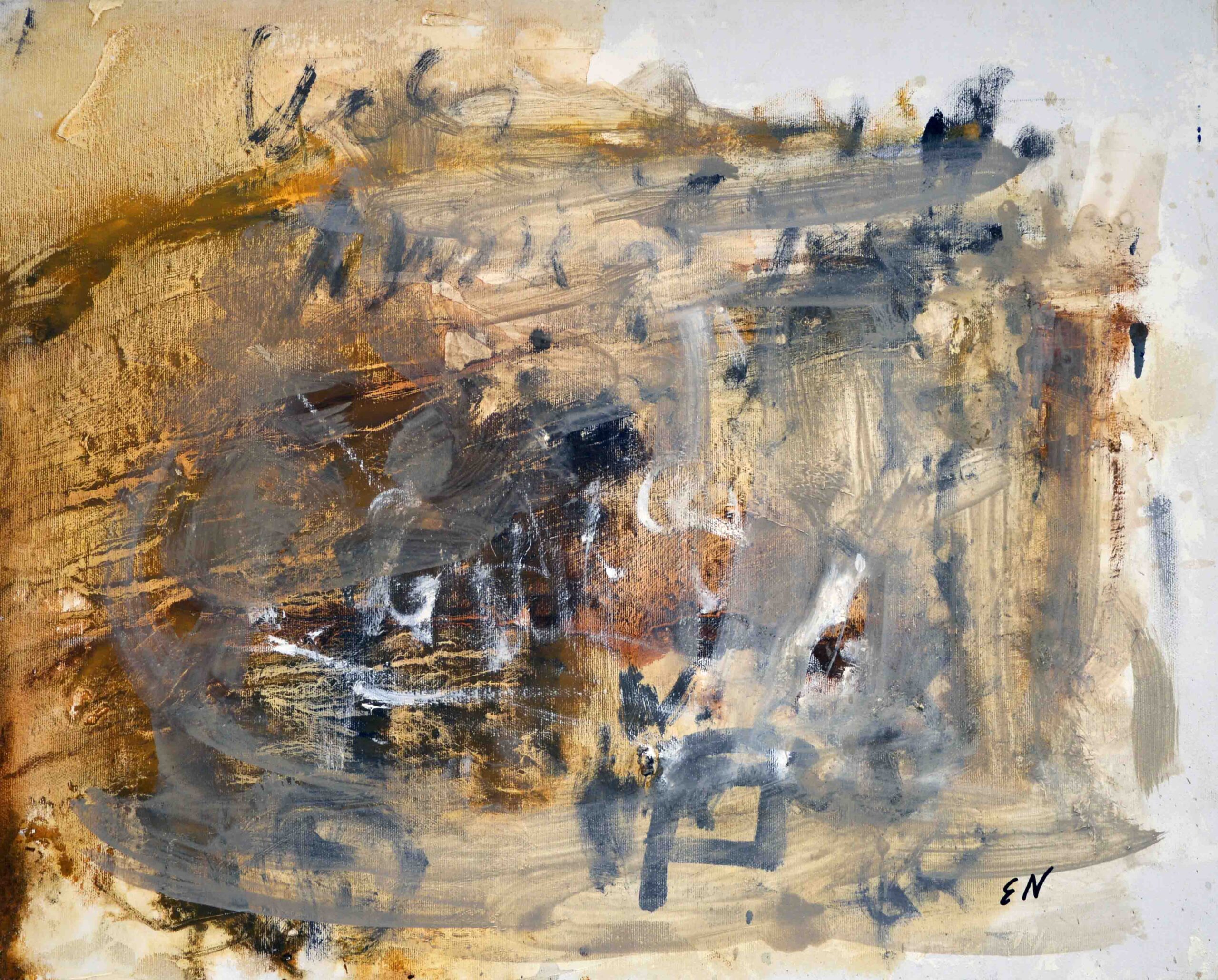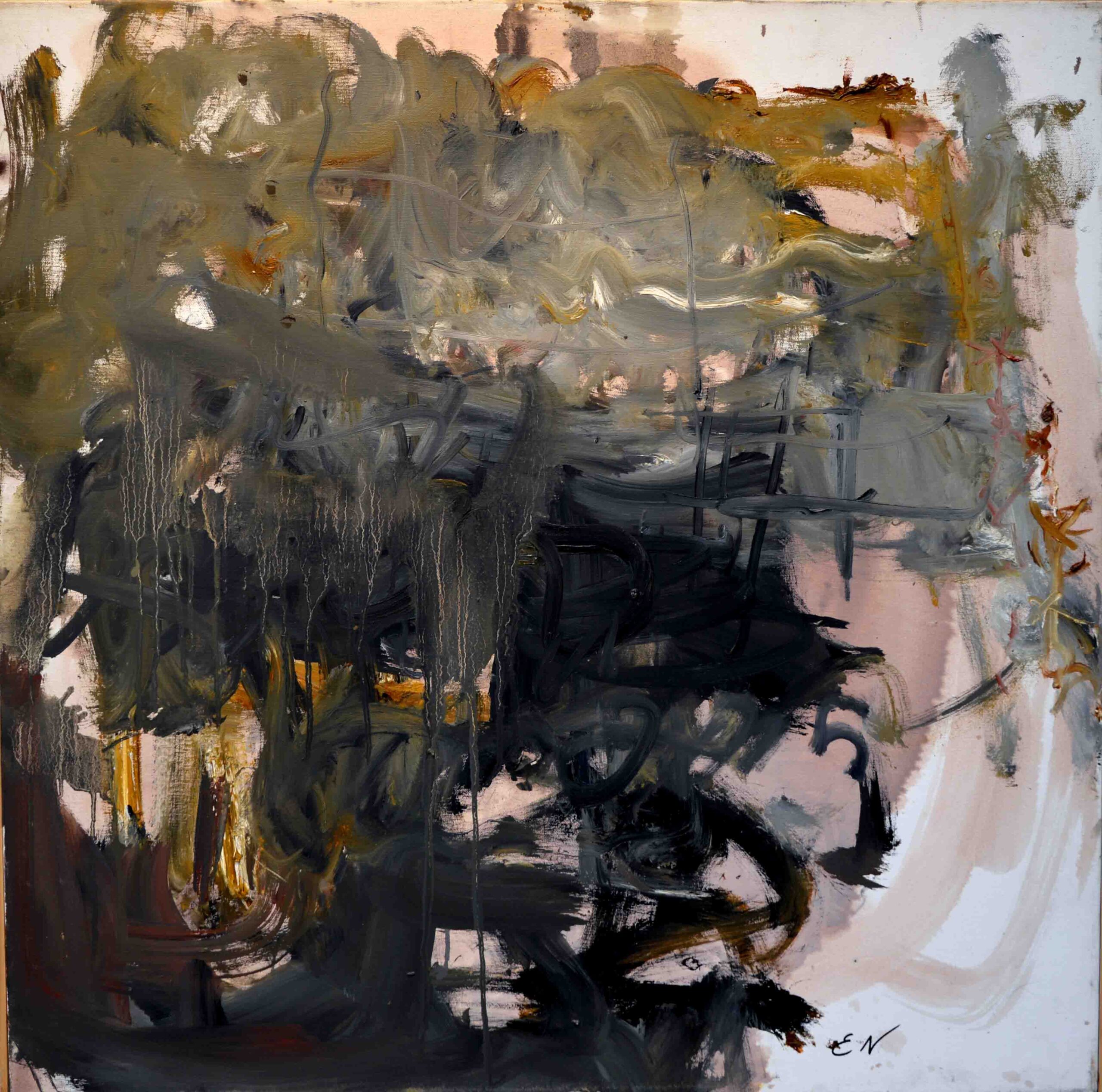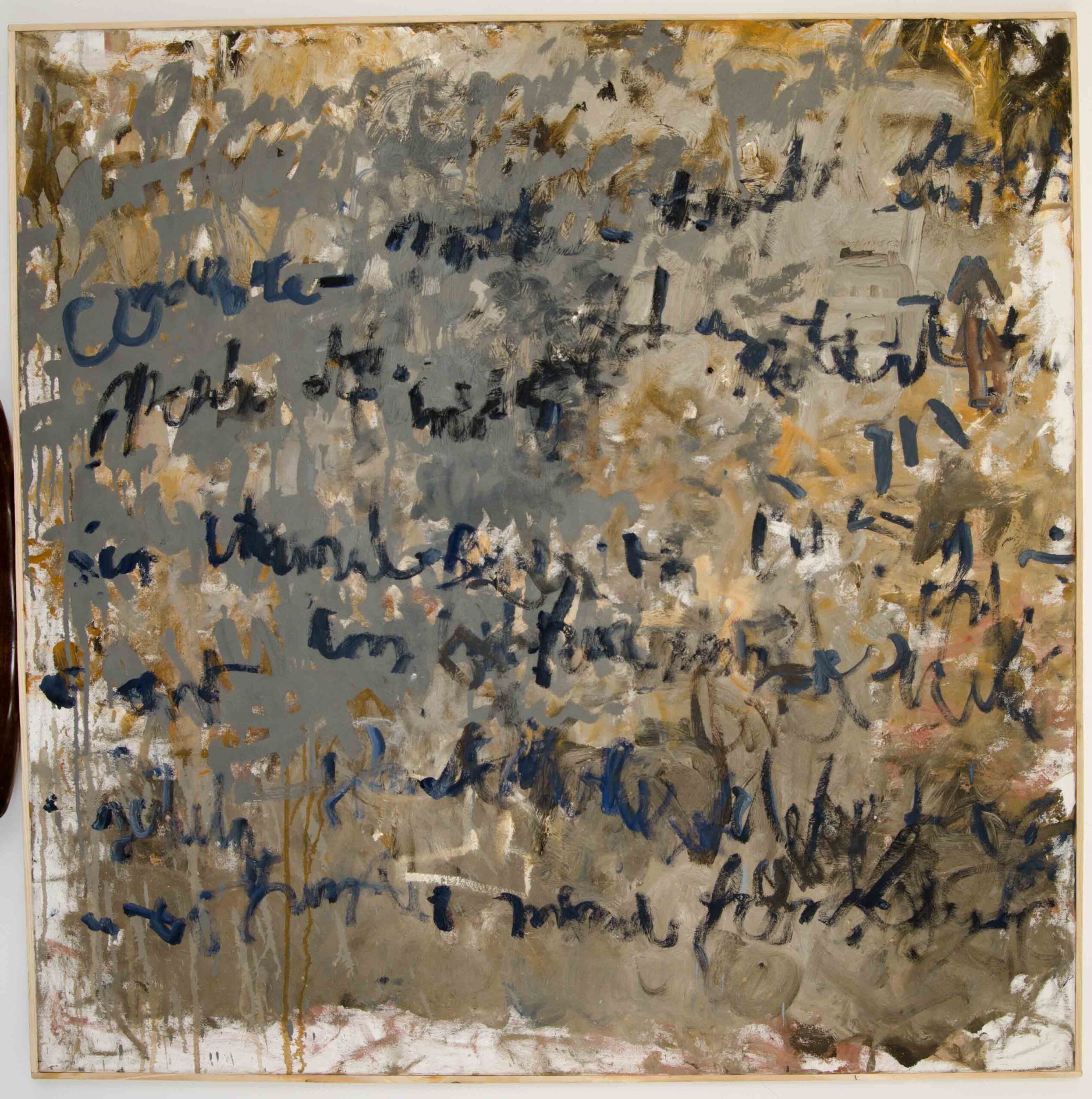Gulag artistic Cycle

Ciclul gulag
“Contextually and statistically, Nicogosian’s artwork is abstract. But when we look carefully, insistently, with the “third eye” and we notice that the canvas becomes gradually fading and it becomes crystal clear that in its “flesh” exists forms, suggestions, texts. The “Abstract feeling” persists only if we place ourselves outside the communication act. In this painting, the desire to scream and to be silent come to terms and live together. They stay together like life and its shadow.
We can speak here, undoubtedly, about an art of trauma, of a perpetual sunset, sedimented, gloomy, sepulchral. Perhaps the titles of the canvases clear in a more explicit manner certain messages or backgrounds, but I prefer to read these artworks at the strict level of iconography, where subsists the pure gesture, the glaze, the chromatic magma, the calligraphy, the instinctive brush stroke.
I try to place myself (and I don’t know if i succeed) in this totalising speech of the artist. My mind is swarming with associations. From this point of view, the Gulag perceived as a totalitarian night. On this ground I also sense the tragedy of Armenians slaughtered by the people with whom they lived for centuries. I also can see here the white peak of Ararat, here is the broken and conquered Caucasus by countless oppressions, here is an entire drama of those silenced and then left censored for ever. In the cold of ignoring. In perpetual pain.
I cannot be less gravely, since this artist depicts only images of pain, installed maybe forever or maybe waiting for the end of the time. This is the reason all we see in these paintings is of tragic nature, thrilling and frightening. They are “crystalized” forms in inner painting.”
Vladimir BULAT
Gulag’s windows
“Contextual și statistic, pictura lui Nicogosian este abstractă. Dar când o privim mai atent, insistent, cu „ochiul cel secund” și vedem că suportul devine treptat evanescent, ajunge să fie clar faptul că în „ carnea” ei exist[ forme, sugestii, texte. „Abstracția“ persist doar în măsura în care noi rămânem exterior actului de a comunica. În picture aceasta, dorința de a răcni și de a tăcea se împacă și conviețiuesc. Stau laolaltă, ca viața și umbra ei. E vorba aici, indubitabil, despre o artă a trumei, a unui apus continuu, sedimentat, lugubru, carvernos. Poate că titlurile pânzelor lămuresc într-o manieră mai explicită anumite mesaje sau temeiuri, dare u prefer să citesc aceste tablouri la nivelul strict al iconografiei – unde rămâne gestul pur, frotajul, magma cromatică, caligrafia, tușa inconștientă.
Încerc să mă situez (și nu îmi dau seama cât îmi reușește) în acest discurs totalizant al artistului. Mintea îmi roiește de asociații. De aici, Gulag-ul văzut ca noaptea totalitară. Pe acest teren intuiesc și drama armenilor masacrați de cei în mijlocul cărora au trait de-a lungul veacurilor, tot aici zăresc parcă și piscul cel mai adesea înzăpezit al Araratului, aici e Caucazul frânt și biruit de numeroase asupriri, aici e întreaga dramă a tuturor celor ce sunt împinși în muțenie și lăsați astfel. În frigul ignorării. În durere endemic.
Nu pot fi mai puțin grav, căci acest artist nu pictează decât povești ale suferinței, instalate parcă pentru vecie sau, poate în așteptarea veacului celui din urmă. Tocmai de aceea, tot ce vedem în aceste tablouri e de natură tragică, frisonantă, înfricoșătoare.. Sunt forme “cristalizate” în actul însuși al picturii. “
Vladimir BULAT
Ferestrele Gulagului
Artworks
Learn first about future events
We will process the personal data you have supplied in accordance with our privacy policy.







































